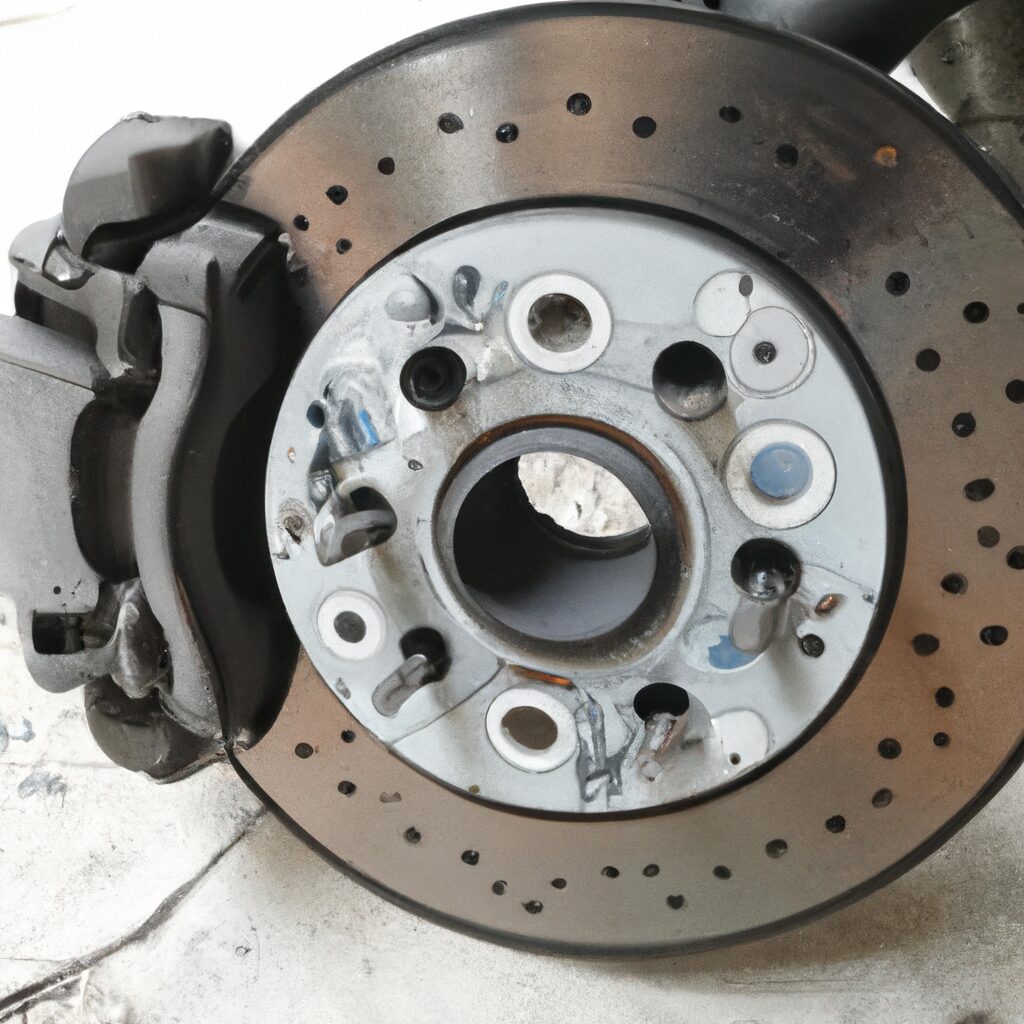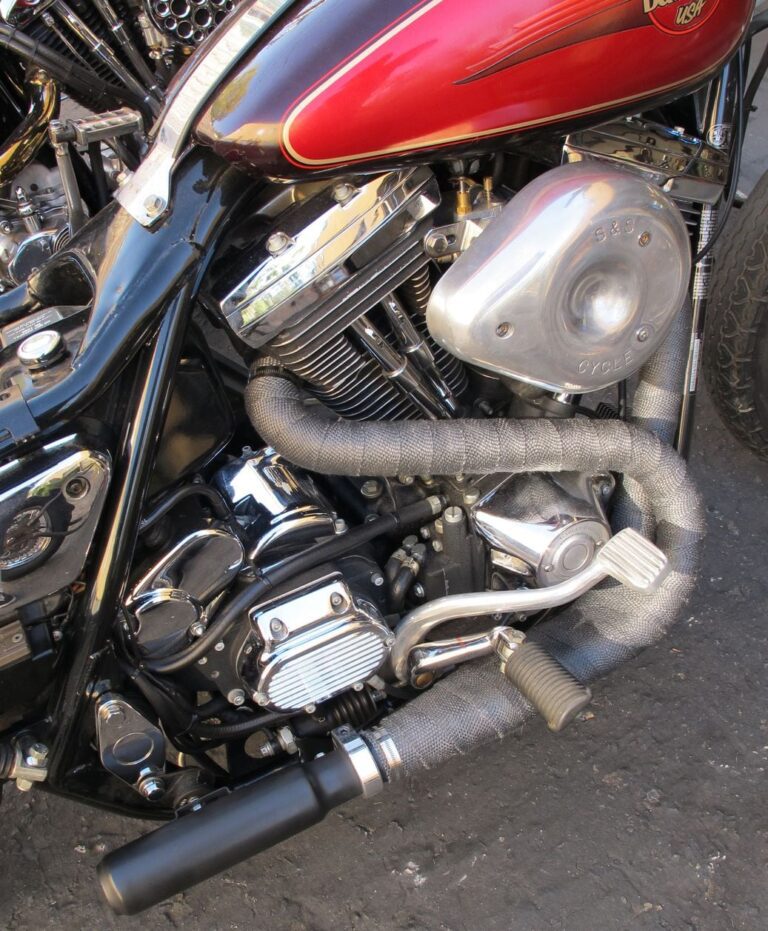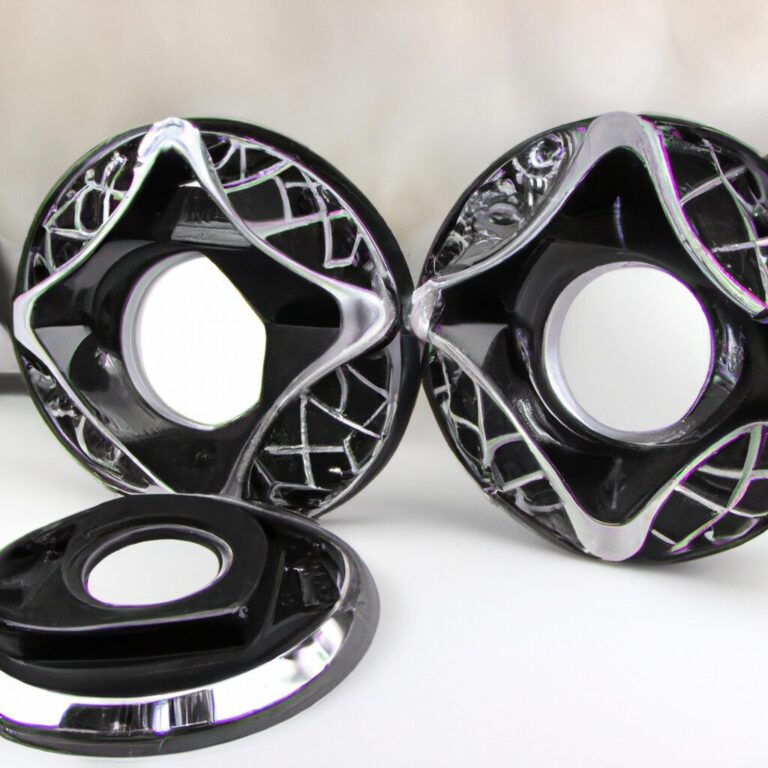when to replace drum brake shoes
Introduction
When it comes to maintaining your vehicle, one of the most important components to keep in mind is the drum brake shoes. Drum brake shoes are responsible for providing the friction needed to slow and stop your vehicle. Over time, these brake shoes can wear down and need to be replaced. Knowing when to replace your drum brake shoes is essential for ensuring the safety of your vehicle and those around you. This article will provide an overview of when to replace drum brake shoes and the signs to look out for.
How to Tell When It’s Time to Replace Your Drum Brake Shoes
When it comes to maintaining the safety of your vehicle, it is important to know when it is time to replace your drum brake shoes. Drum brakes are a type of brake system that uses a set of brake shoes to press against the inside of a rotating drum to create friction and slow the vehicle. Over time, the brake shoes can wear down and become less effective, so it is important to know when it is time to replace them.
The most obvious sign that it is time to replace your drum brake shoes is if you hear a squealing or grinding noise when you apply the brakes. This noise is caused by the metal-on-metal contact between the brake shoes and the drum. If you hear this noise, it is important to have your brakes inspected as soon as possible.
Another sign that it is time to replace your drum brake shoes is if you feel a vibration when you apply the brakes. This is usually caused by the brake shoes being worn down and not making full contact with the drum. If you feel a vibration when you apply the brakes, it is important to have your brakes inspected.
Finally, if you notice that your vehicle is taking longer to stop than usual, it could be a sign that your drum brake shoes need to be replaced. Over time, the brake shoes can become worn down and less effective, so it is important to have them inspected if you notice that your vehicle is taking longer to stop.
It is important to keep an eye out for these signs that it is time to replace your drum brake shoes. If you notice any of these signs, it is important to have your brakes inspected as soon as possible to ensure the safety of your vehicle.
The Benefits of Replacing Drum Brake Shoes Before They Wear Out
Replacing drum brake shoes before they wear out can provide a number of benefits to vehicle owners. Drum brakes are a common type of brake system found in many vehicles, and they rely on brake shoes to provide the friction necessary to slow and stop the vehicle. Replacing these brake shoes before they wear out can help to ensure that the brakes are functioning properly and that the vehicle is safe to drive.
One of the primary benefits of replacing drum brake shoes before they wear out is improved braking performance. As brake shoes wear down, they become less effective at providing the necessary friction to slow and stop the vehicle. Replacing the brake shoes before they wear out can help to ensure that the brakes are functioning at their peak performance. This can help to improve the overall safety of the vehicle and reduce the risk of an accident.
Another benefit of replacing drum brake shoes before they wear out is improved fuel efficiency. As brake shoes wear down, they become less effective at slowing and stopping the vehicle, which can cause the vehicle to use more fuel. Replacing the brake shoes before they wear out can help to ensure that the brakes are functioning properly and that the vehicle is using the least amount of fuel possible. This can help to reduce the cost of operating the vehicle and improve its overall fuel efficiency.
Finally, replacing drum brake shoes before they wear out can help to extend the life of the brake system. As brake shoes wear down, they can cause additional wear and tear on the other components of the brake system. Replacing the brake shoes before they wear out can help to reduce the amount of wear and tear on the other components, which can help to extend the life of the brake system and reduce the need for costly repairs.
In conclusion, replacing drum brake shoes before they wear out can provide a number of benefits to vehicle owners. Replacing the brake shoes before they wear out can help to ensure that the brakes are functioning properly and that the vehicle is safe to drive. It can also help to improve fuel efficiency and extend the life of the brake system. For these reasons, it is important for vehicle owners to replace their drum brake shoes before they wear out.
What to Look for When Inspecting Drum Brake Shoes for Wear
When inspecting drum brake shoes for wear, it is important to look for several key indicators. First, check the thickness of the brake shoe lining. The lining should be at least 1/8 of an inch thick. If the lining is thinner than this, it is time to replace the brake shoes.
Next, inspect the brake shoe for any signs of cracking or splitting. If the lining is cracked or split, it is no longer effective and should be replaced.
Also, check the brake shoe for any signs of glazing. Glazing occurs when the brake shoe has been exposed to excessive heat, which can cause the lining to become hard and shiny. If the lining is glazed, it should be replaced.
Finally, inspect the brake shoe for any signs of contamination. Contamination can occur when dirt, dust, or other debris gets into the brake shoe, which can cause it to wear prematurely. If the brake shoe is contaminated, it should be cleaned and replaced.
By inspecting the brake shoe for these key indicators of wear, you can ensure that your brakes are in good working order and that they will provide you with reliable stopping power.
How to Properly Replace Drum Brake Shoes
Replacing drum brake shoes is an important part of maintaining the safety and performance of your vehicle. It is important to follow the proper steps to ensure that the job is done correctly. This guide will provide you with the necessary information to properly replace your drum brake shoes.
Before beginning the job, it is important to make sure that you have all the necessary tools and supplies. You will need a jack and jack stands, a lug wrench, a flathead screwdriver, a hammer, a brake spring tool, and new brake shoes.
Once you have all the necessary tools and supplies, you can begin the job. Start by jacking up the vehicle and placing it on jack stands. Then, remove the wheel and tire.
Next, you will need to remove the brake drum. To do this, use the lug wrench to remove the lug nuts and then pull the drum off.
Once the drum is removed, you will need to remove the old brake shoes. To do this, use the flathead screwdriver to remove the hold-down springs and then use the brake spring tool to remove the brake shoe return springs.
Once the old brake shoes are removed, you can install the new ones. Start by installing the brake shoe return springs and then the hold-down springs. Make sure that the springs are properly secured.
Finally, you will need to install the brake drum. To do this, place the drum over the brake shoes and then use the lug wrench to secure the lug nuts.
Once the job is complete, it is important to test the brakes to make sure that they are working properly. If everything is working correctly, you can lower the vehicle and replace the wheel and tire.
By following these steps, you can properly replace your drum brake shoes and ensure that your vehicle is safe and performing at its best.
The Cost of Replacing Drum Brake Shoes
Drum brake shoes are an important component of a vehicle’s braking system. They are responsible for providing the friction necessary to slow and stop the vehicle. Over time, the brake shoes can wear out and need to be replaced. Replacing drum brake shoes can be a costly endeavor, but it is important to ensure the safety of the vehicle and its occupants.
The cost of replacing drum brake shoes will vary depending on the make and model of the vehicle. Generally, the cost of the parts alone can range from $50 to $200. This cost does not include the labor required to install the new brake shoes. Depending on the complexity of the job, labor costs can range from $50 to $200 as well.
In addition to the cost of the parts and labor, there may be other costs associated with replacing drum brake shoes. For example, if the brake drums need to be machined or replaced, this can add to the cost of the repair. Additionally, if the brake shoes are being replaced due to a malfunction, there may be additional costs associated with diagnosing and repairing the underlying issue.
Overall, the cost of replacing drum brake shoes can range from $100 to $400, depending on the make and model of the vehicle and the complexity of the job. It is important to ensure that the brake shoes are replaced in a timely manner to ensure the safety of the vehicle and its occupants.
The Advantages of Replacing Drum Brake Shoes Regularly
Replacing drum brake shoes regularly is an important part of maintaining a vehicle’s braking system. Drum brakes are a type of brake system that uses a set of brake shoes to press against the inside of a rotating drum to slow or stop the vehicle. Regularly replacing the brake shoes is essential for ensuring the safety and performance of the vehicle.
One of the main advantages of replacing drum brake shoes regularly is improved braking performance. Over time, the brake shoes can become worn down, reducing their effectiveness. Replacing the brake shoes ensures that the brakes are able to provide maximum stopping power. This is especially important in emergency situations, where quick and reliable braking is essential.
Another advantage of replacing drum brake shoes regularly is improved safety. Worn brake shoes can cause the brakes to become less responsive, leading to longer stopping distances and increased risk of accidents. Replacing the brake shoes ensures that the brakes are able to provide maximum stopping power, reducing the risk of accidents.
Finally, replacing drum brake shoes regularly can help to extend the life of the brake system. Worn brake shoes can cause excessive wear on other components of the brake system, such as the drums and wheel cylinders. Replacing the brake shoes regularly helps to reduce this wear, extending the life of the brake system and reducing the need for costly repairs.
In conclusion, replacing drum brake shoes regularly is an important part of maintaining a vehicle’s braking system. Regularly replacing the brake shoes can improve braking performance, improve safety, and extend the life of the brake system. For these reasons, it is important to replace the brake shoes regularly to ensure the safety and performance of the vehicle.
Common Signs That It’s Time to Replace Drum Brake Shoes
Drum brakes are an important part of a vehicle’s braking system, and it is important to keep them in good condition. Over time, the brake shoes can wear out and need to be replaced. Here are some common signs that it is time to replace your drum brake shoes:
1. Excessive Brake Noise: If you hear a loud grinding or squealing noise when you apply the brakes, it could be a sign that the brake shoes are worn out.
2. Vibrations: If you feel a vibration when you apply the brakes, it could be a sign that the brake shoes are worn out.
3. Pulling: If your vehicle pulls to one side when you apply the brakes, it could be a sign that the brake shoes are worn out.
4. Spongy Brakes: If the brakes feel spongy or soft when you apply them, it could be a sign that the brake shoes are worn out.
5. Low Pedal: If the brake pedal feels low or close to the floor, it could be a sign that the brake shoes are worn out.
If you notice any of these signs, it is important to have your brakes inspected and replaced if necessary. Replacing worn brake shoes is an important part of maintaining your vehicle’s braking system and ensuring your safety on the road.
The Best Practices for Replacing Drum Brake Shoes
Drum brake shoes are an important part of a vehicle’s braking system, and it is important to replace them when they become worn. Replacing drum brake shoes is a relatively simple process, but it is important to follow the best practices to ensure that the job is done correctly.
1. Before beginning the replacement process, it is important to make sure that the vehicle is in a safe and secure location. Make sure that the vehicle is on a flat, level surface and that the parking brake is engaged.
2. The next step is to remove the wheel and tire from the vehicle. This can be done by loosening the lug nuts and then using a jack to lift the vehicle off the ground.
3. Once the wheel and tire have been removed, the drum brake assembly can be accessed. It is important to make sure that the drum brake assembly is clean and free of debris before beginning the replacement process.
4. The next step is to remove the old brake shoes. This can be done by removing the retaining clips and then pulling the brake shoes away from the backing plate.
5. Once the old brake shoes have been removed, the new brake shoes can be installed. Make sure that the new brake shoes are properly aligned with the backing plate and that the retaining clips are securely in place.
6. After the new brake shoes have been installed, the drum brake assembly should be reassembled. Make sure that all of the components are properly aligned and that the wheel and tire are securely in place.
7. Finally, it is important to test the brakes to make sure that they are working properly. This can be done by slowly pressing the brake pedal and making sure that the vehicle stops in a safe and controlled manner.
Following these best practices will ensure that the drum brake shoes are replaced correctly and that the vehicle’s braking system is functioning properly.
Q&A
1. How often should I replace my drum brake shoes?
It is recommended that you replace your drum brake shoes every 25,000 to 50,000 miles, depending on your driving habits and the condition of your brakes.
2. What are the signs that I need to replace my drum brake shoes?
The most common signs that you need to replace your drum brake shoes are a grinding noise when you apply the brakes, a spongy feeling when you press the brake pedal, or a decrease in braking power.
3. What happens if I don’t replace my drum brake shoes?
If you don’t replace your drum brake shoes, you may experience decreased braking power, increased stopping distances, and increased wear on other brake components.
4. How much does it cost to replace drum brake shoes?
The cost to replace drum brake shoes can vary depending on the make and model of your vehicle, but typically ranges from $150 to $300.
5. What other components should I replace when replacing drum brake shoes?
When replacing drum brake shoes, it is recommended that you also replace the brake drums, wheel cylinders, and brake hardware.
6. Can I replace my drum brake shoes myself?
Yes, you can replace your drum brake shoes yourself if you have the necessary tools and experience. However, it is recommended that you have a professional mechanic do the job to ensure that it is done correctly.
7. What type of brake shoes should I use?
It is recommended that you use OEM (Original Equipment Manufacturer) brake shoes for your vehicle.
8. How long do drum brake shoes last?
Drum brake shoes typically last between 25,000 and 50,000 miles, depending on your driving habits and the condition of your brakes.
Conclusion
In conclusion, drum brake shoes should be replaced when they become worn down, when the brake pedal is spongy or when the brakes are making a squealing noise. It is important to replace the brake shoes as soon as possible to ensure the safety of the vehicle and its passengers. If the brake shoes are not replaced in a timely manner, it can lead to further damage to the brakes and other components of the vehicle.



